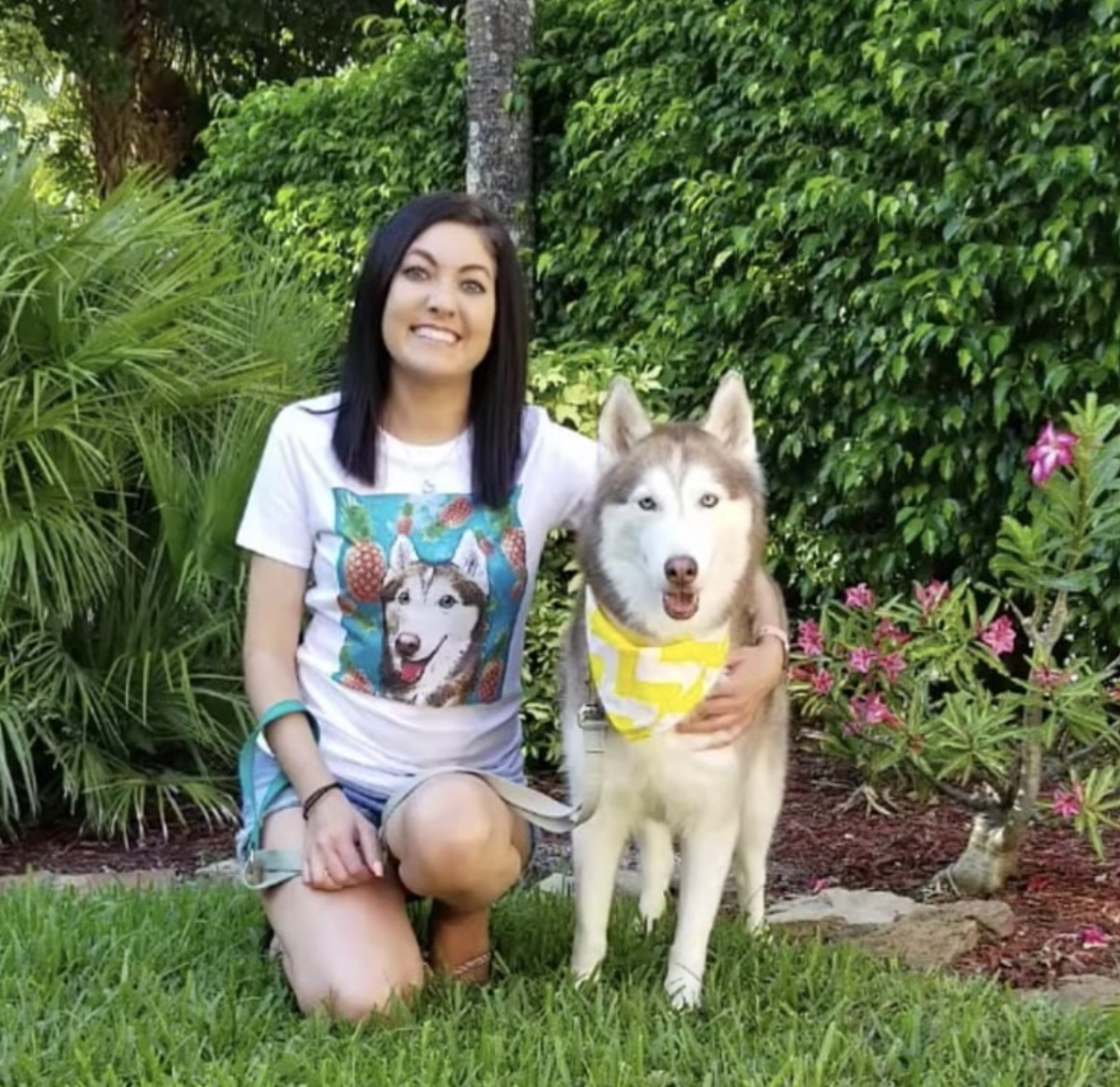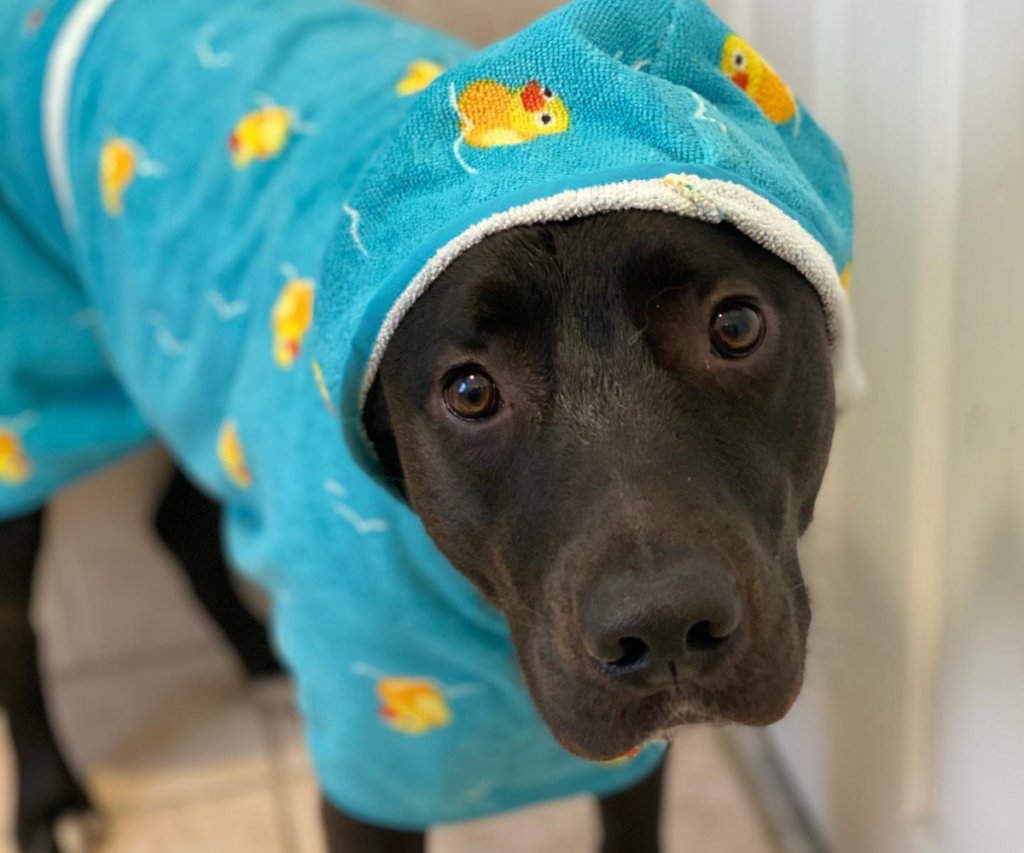For Pups With Short Attention Spans…
Pit Bulls are prone to skin issues for a variety of reasons, including heritable disorders such as atopic dermatitis, skin cancers, and vitamin deficiencies. Their characteristically short coats are also less effective and less protective against allergens and irritants. Lifestyle can also impact skin health, with pups who live in shelters experiencing more than their fair share of skin issues. It’s always recommended to consult with your vet first, but diet changes, environments changes, and supplements may all be effective at alleviating your Pittie’s itchiness
If you have a Pit Bull, chances are you’ve caught them going to town chewing their nether regions once or twice, only to turn around with those big Pittie eyes giving you that look that says, “What!? I can’t help it! It’s itchy!”
So, why is it that Pibbles are prone to all these itchy skin problems?
What Causes Skin Problems in Pit Bulls?


Genetics Can Play A Role
First of all, “Pit Bull” isn’t an official dog breed, but rather an umbrella term that encompasses many different dog breeds and mixes—such as American Pit Bull Terriers, Bull Terriers, American Staffordshire Terriers, and Staffordshire Bull Terriers—that have descended from Bulldogs and Terrier-type breeds without any oversight for specific physical characteristics. However, recent research studies have concluded that breeds in this category have a few genetic predispositions in common when it comes to hereditary skin conditions:
- Hemangiosarcoma: These are malignant (cancerous) tumors that begin with the uncontrolled growth of cells within blood vessels and can spread throughout the body, and sometimes appear on the skin. According to the Humane Society Veterinary Medical Association, Pit Bulls have been found to have a genetic predisposition to these types of tumors1.
- Atopic Dermatitis: This is a condition causing red, itchy skin due to allergies (often to food or environmental factors like pollen). Atopic Dermatitis is another heritable skin condition that can cause your Pit Bull to have flare-ups of irritated skin2.
- Demodicosis: There are mites that exist naturally on dog (and human!) skin called Demodex mites. Normally, mite numbers are kept low by the body’s immune system, but sometimes the mites go gangbusters. They can then cause hair loss, crusts, itchiness, and other lesions. Pit Bulls may have an inherited predisposition to a juvenile-onset form of mite breakout3, 4. (Don’t worry, pet parents: each species of demodex mite is host-specific, so you can’t “catch” these mites from your dog! You have your own.)
Pit Bulls Only Have One Layer Of Fur To Protect Their Skin
Pit bulls are known for their short, velvety fur—heck, it’s the reason the Internet dubbed them “velvet burritos!” However, this short, single-layered coat is the only protection their skin has against environmental irritants (sun, wind, water, etc.) and allergens. This leaves them more susceptible to skin issues compared to their double-coated dog friends, like Huskies and German Shepherds. Double-coated breeds have the protection of both an outer coat made up of longer, guard hairs as well as an insulating undercoat. Pit Bulls’ single-layered coat can leave them susceptible to problems like5:
- Cutaneous squamous cell carcinomas: A type of skin cancer that often appears on the bellies of Pit Bulls who tend to sun themselves lying on their backs with little fur to protect them
- Solar Keratosis: Scaly spots on sun-damaged skin that can be a precursor to skin cancer
- Hyperkeratosis: Patches of hardened skin, also a precursor to skin cancer


Environmental Allergies Or Irritants May Be To Blame
Pit Bulls are prone to atopic dermatitis, which is caused by, among other things, environmental allergens in your home, yard, or along the routes you take your dog for walkies. Just like humans, your pup may have year-round allergies to specific irritants, seasonal allergies, or you may even notice new allergies pop up after a move to a different part of the country.
These allergic reactions can cause your pup to have excessively itchy and irritated skin, especially around their paw pads, feet, ankles, bellies, snouts and eyes. Ongoing allergies without treatment may lead to bacterial or yeast infections after your pup undoubtedly tries to scratch, lick, and chew themselves to relief. Common environmental allergens include things like:
- Dust
- Grass
- Pollen
- Mites
- Fleas
- Lawn treatments (pesticides, fertilizers)
- Mold
It’s also worth noting that the itchy and irritated skin caused by environmental allergens can also be caused by food allergies, so it may take some detective work to figure out at first.
Food Allergies/Sensitivities Can Affect Pit Bulls
Food allergies and sensitivities are difficult to pinpoint in dogs. Although actual food allergies—caused by a reaction from your dog’s immune system—are less common than a food sensitivity, they can both be problematic when trying to find the right diet for your pup. The proteins (beef, chicken, eggs, etc.) in dog foods are usually the culprits when it comes to food allergies. Here’s a list of the most triggering dog food ingredients:
- Beef
- Dairy (Usually due to the naturally-occurring sugar, lactose.)
- Chicken
- Wheat (Contrary to popular belief, wheat is much lower on the list of problem-causing foods, though the gluten can sometimes be an issue.)
- Eggs
- Soy
Mange Can Be Problematic For Pit Bulls
There are two different types of mange that are both problematic for Pit Bulls:
- Demodectic Mange (a.k.a Red Mange or Demodicosis)
As mentioned above, Pit Bulls may have a genetic predisposition to out-of-control Demodex mites. These creepy crawlies run the risk of causing demodectic mange; for Pit Bulls, this risk is especially high during their juvenile puppy years (usually under age two)6. This can cause hair loss, itching, and scaly, crusty skin.
- Sarcoptic Mange
This is what many dog owners think of when they hear “mange.” Sarcoptic mange is caused by nasty, burrowing mites that are extremely contagious—not only to dogs, but humans too! Yuck! Sarcoptic mange is easily spread from dog to dog in places where there’s a lot of contact, like animal shelters. As you may know, Pit Bulls are sadly the most common breed found in shelters, and therefore have a higher likelihood of exposure to mange.
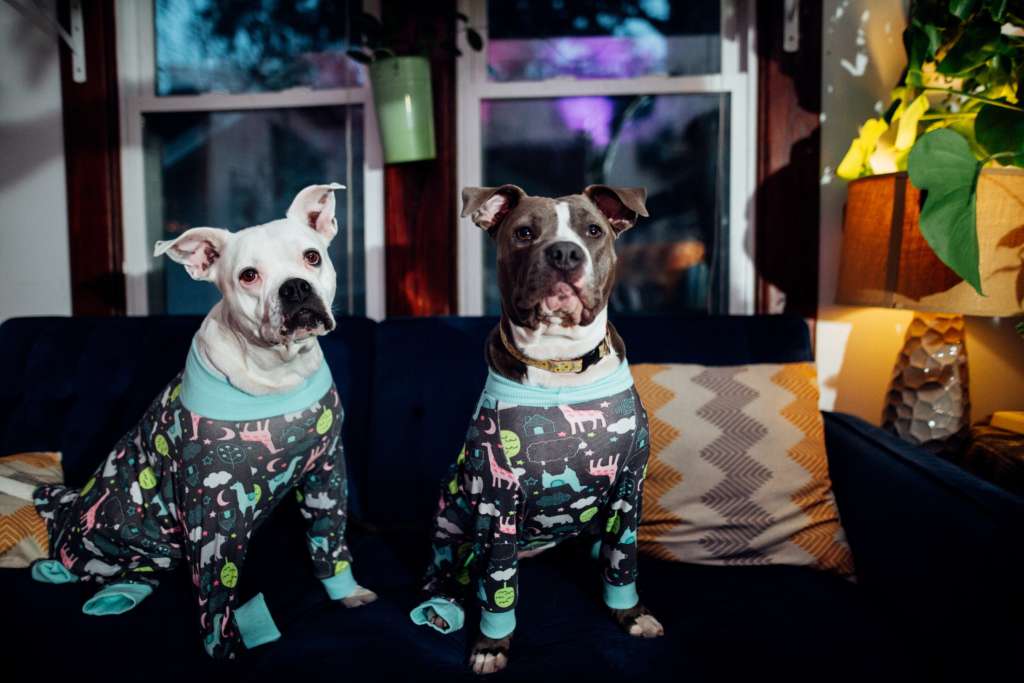

Signs Your Pit Bull Might Have A Skin Issue
Even though our pups can’t tell us that they have itchy or bothersome skin problems, if you catch them excessively scratching or chewing at their fur, this is often a dead giveaway that something is irritating them. The key is to catch the early warning signs before your pit ends up chewing their way into a skin infection or before chronic conditions have time to get worse. Signs your Pit Bull may be having skin problems include:
- Excessive scratching
- Chewing, biting or licking themselves (especially paws)
- Red, inflamed skin
- Dry, rough patches of skin
- Hair loss
- Smelly odor
- Patches of skin that are moist, oozing or bleeding
- Constant or frequent head shaking
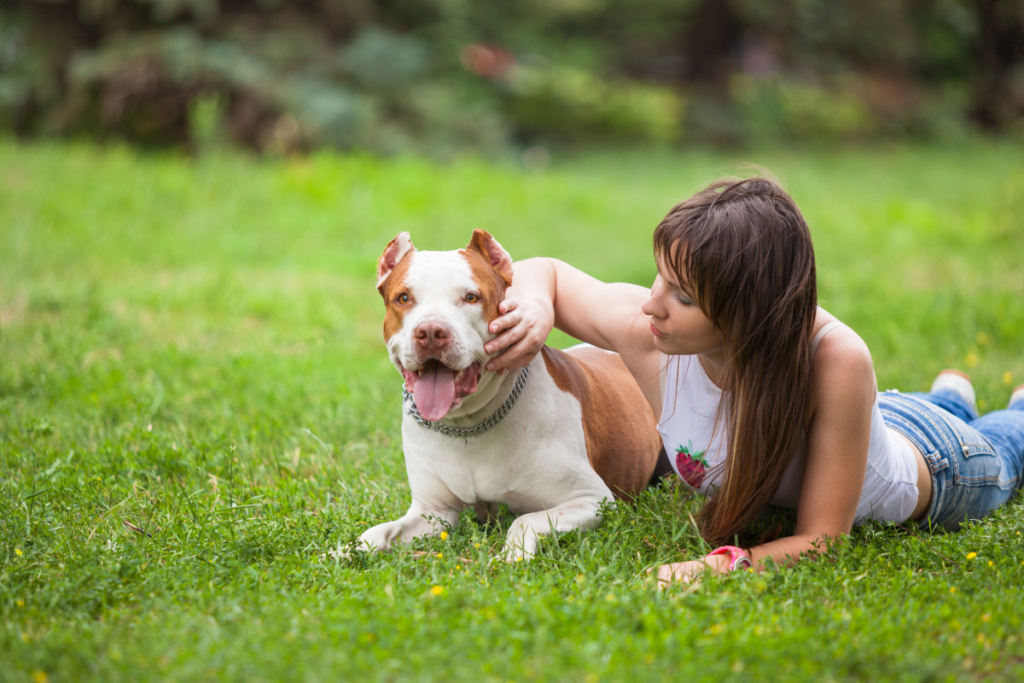

How To Treat Your Pit Bull’s Skin Issues
Luckily, most skin issues are easily treatable when they’re caught early and properly diagnosed by your Pit Bull’s veterinarian. Our pups have a variety of options when it comes to treatments and preventions for mild to moderate skin itchies.
Consult With A Vet First
Always start with a vet appointment if your pup is showing any signs and symptoms of skin problems listed above. This way your vet can test for any parasites, mites, or allergies and properly diagnose any underlying health issues or serious skin conditions. Your pup’s vet can also advise you on the best route for treatments, prescribe any necessary prescriptions, and refer you to a veterinarian who specializes in dermatology if need be.


Consider Allergy Shots
If your veterinarian diagnoses your Pit Bull with allergies, they may recommend allergy shots or allergy medication if the problem is severe enough. For some dogs, allergy shots/medication can make a huge difference with alleviating symptoms, but it’s important to keep in mind that they don’t treat the underlying issue.
This means that your pup will have to maintain a scheduled allergy shot/medicine routine (possibly for life), which can be not only expensive, but also time consuming. If at all possible, it’s better to diagnose and treat the underlying cause of your pit bull’s allergies and avoid or remove the actual irritant. This could require some changes to their environment or diet.
Make Environmental Changes
Is your Pit Bull allergic to something inside your house, around the yard, or along their favorite route for afternoon walkies? It may first take some detective work to figure out what the offending allergen might be, but once you and your vet know what’s irritating your pup, taking steps to make environmental changes for your pup might look like:
- Changing your daily walk routes to avoid certain grasses, plants or lawns treated with chemicals
- Wiping down your Pit Bull’s paws and legs after walks or trips to the dog park
- Creating a routine bath schedule
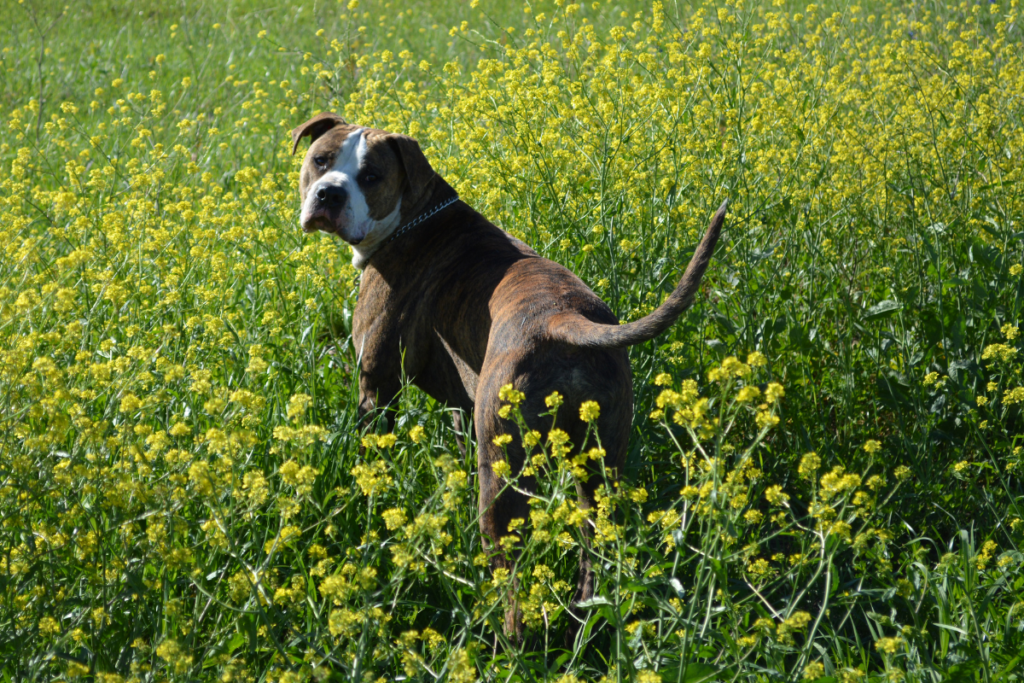

Be Choosy With Their Diet
Does your Pit Bull have noticeably itchier skin after switching their diet? Maybe you’ve noticed some runny poops and extra stinky farts lately along with their excessive scratching. If you’re concerned that your pup may have food allergies or sensitivities (yup, there’s a difference! Read more about it here), it may be trickier than you think to narrow down the problem-causing ingredient.
Food allergy tests aren’t always accurate, and our dogs don’t really have a way to tell us which food or ingredient is causing them problems, so it often comes down to some detective work on our end as pet parents.
Related Article: Does My Dog Have A Food Allergy?
It’s often the proteins (beef, chicken, eggs, etc.) in dog foods that end up being the culprits causing dog food allergies. It may take some trial-and-error for you and your vet to find the diet that works best for your pup, but a good place to start is by choosing a quality dog food and a novel protein that will be less likely to cause a ruckus in your pup’s body, such as:
- Fish (often the easiest to find)
- Venison
- Rabbit
- Elk
- Lamb
- Alligator
- Kangaroo


BARK Food had all of this in mind when creating food just for pit bulls—and a skin and coat supplement, too. Get 25% off your first delivery!
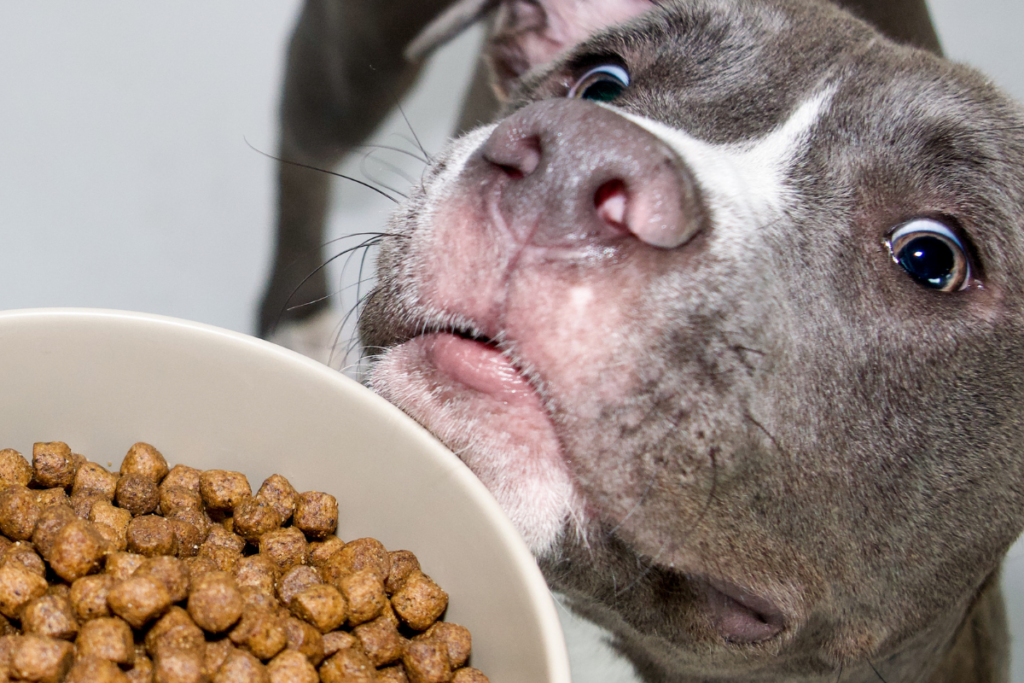

Include Skin Supplements
Skin supplements can be a great way to help prevent some skin problems from recurring, or even starting in the first place. They often include fish oil, omega fatty acids, or other essential vitamins and minerals to help alleviate your pup’s itchy skin, and improve that velvety-soft Pit Bull fur. You’ll usually find them labeled as “skin and coat” supplements. They often come in different forms like chewable tabs, powders, or even as an add-on with your pup’s favorite Bark Eats recipe!
Try Topical Skin Products
Topical skin products can help alleviate your Pit Bull’s itchy or irritated skin. Your vet may prescribe a specific topical treatment for more severe issues, or for milder skin irritation they may recommend products such as:
- Skin Balms: These include ointments, lotions, and sprays that can help relieve your pup’s irritated and itchy skin.
- Dog-Safe Sunscreen: DO NOT use human sunscreen—they often contain ingredients toxic to dogs! Look for sunscreens made specifically for dogs that do not contain Zinc Oxide and Titanium Oxide. This can be helpful for Pit Bulls who spend extra time in the sun.
- Soothing Dog Shampoos: Look for formulas labeled for “sensitive skin”, “allergy relief” or shampoos with ingredients such as oatmeal, aloe, or vitamin E. You can also talk to your vet about prescription shampoos.
Generally, it’s best to ask your vet before adding in a topical skin care product to your itchy-skin dog. Topical products can sometimes make skin more irritated instead of better.
Sources
1 Dodds, W. J. “HSVMA Congenital and Heritable Disorders Guide.” Humane Society Veterinary Medical Association, May 2011, https://www.hsvma.org/assets/pdfs/guide-to-congenital-and-heritable-disorders.pdf.
2 Gough, A., Thomas, A., O’Neill, D. “Breed Predispositions to Disease in Dogs and Cats.” Third ed. Chichester: Wiley; 2018. https://www.ncbi.nlm.nih.gov/pmc/articles/PMC3135035/
3 It, V., Barrientos, L., Lopez Gappa, J. Et al. (2010). Association of canine juvenile generalized demodicosis with the dog leukocyte antigen system. Tissue Antigens, 76 (1), 67-70.
4 Plant, J.D., Lund, E.M. & Yang, M. (2011). A case-control study of the risk factors for canine juvenile-onset generalized demodicosis in the USA. Veterinary Dermatology, 22 (1), 95-99.
5 Villalobos, A. E. “Epidermal and Hair Follicle Tumors in Animals.” Merck Veterinary Manual, Merck Veterinary Manual, 18 Apr. 2022, https://www.merckvetmanual.com/integumentary-system/tumors-of-the-skin-and-soft-tissues/epidermal-and-hair-follicle-tumors-in-animals.
6 O’Neill, D. G. et al. “Juvenile-Onset and Adult-Onset Demodicosis in Dogs in the UK: Prevalence and Breed Associations.” Wiley Online Library, Journal of Small Animal Practice, 4 Oct. 2019, https://onlinelibrary.wiley.com/doi/full/10.1111/jsap.13067.

